What's the Best Color for Sleep? 5 Shades to Paint Bedroom Walls, According to Sleep Specialists
If you’re dreaming of a new bedroom color, look no further than this round up of the best colors to keep you calm, and content to help you sleep the full night through
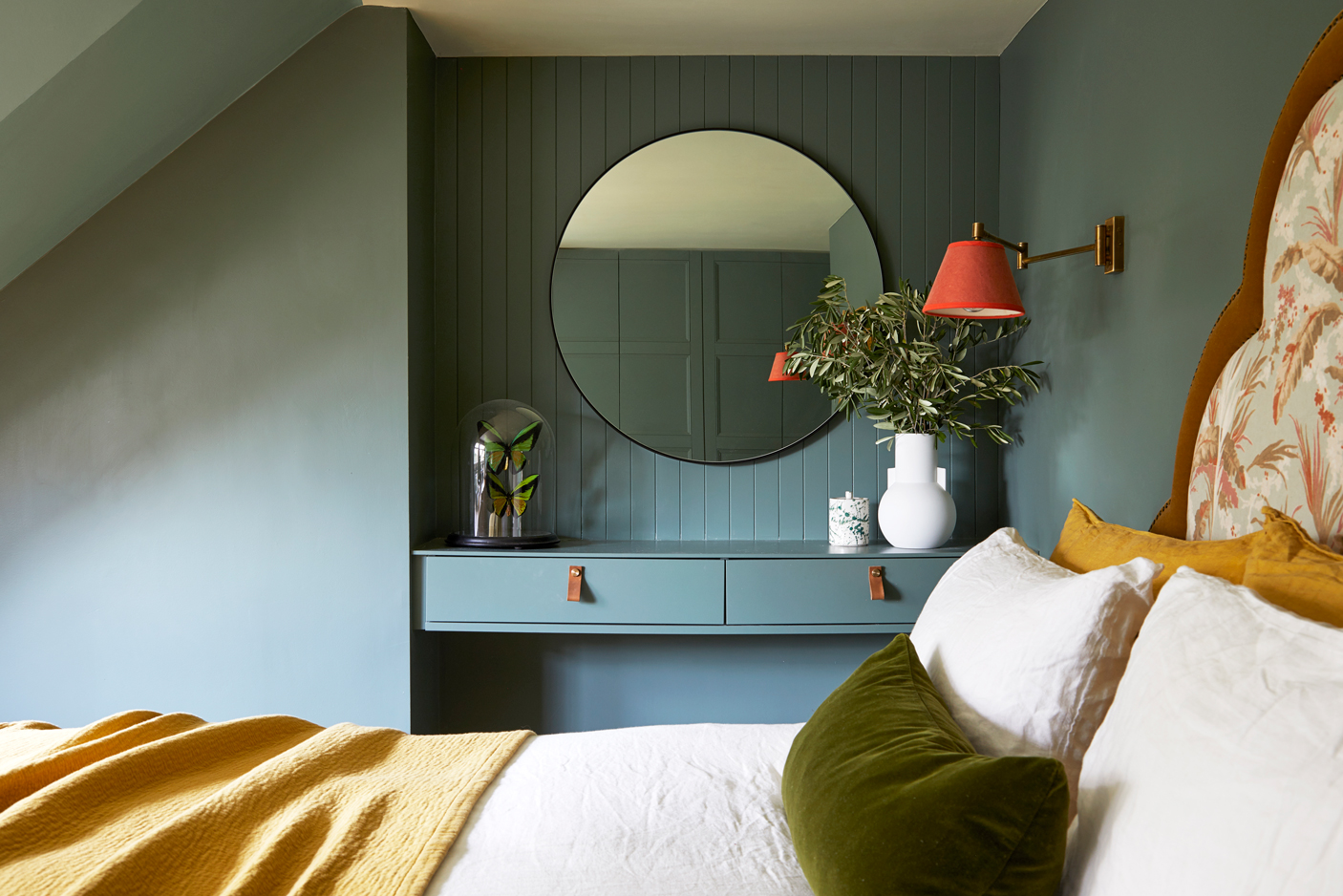

From winding down in the evening to a state of deep sleep, how do we find the best color to assist in our moments of nodding off? This may not be something you’ve ever considered before, but let me assure you, it can make all the difference and is something worth taking the time to consider.
The bedroom environment plays an essential part in each of our lives, the setting prepares you for getting a good night’s sleep so it’s important to make sure it is somewhere you feel calm and relaxed. Consequently, choosing the right color scheme is imperative for creating the sanctuary you desire.
Finding the perfect color to help us to sleep better can be a big decision due to the never-ending options that are now available to us. To make your life a little easier, we’ve narrowed it down to the best selection of colors that will psychologically and aesthetically assist your surroundings into being the best place to escape to at the end of each day for a well-earned rest.
How to find the right color to help you sleep
Choosing a bedroom color comes down to personal preference, but what you are usually looking for are colors that evoke a positive and relaxed state for you as an individual. It’s a good idea to gather some of your favorite images of bedroom interiors to gauge what you’re naturally drawn to and what makes you feel good.
‘These are colors that evoke positive emotion for you personally, meaning you will hopefully choose a color that does that,’ says Dr. Michael Breus, Clinical Psychologist and sleep medicine expert at Sleep Doctor. ‘These are often light blues, browns, greens, or pale yellows. Over time bedroom colors are usually muted tones, nothing too bright, and the paint finish should be flat not glossy, as this bounces around too much light’.
1. Blue
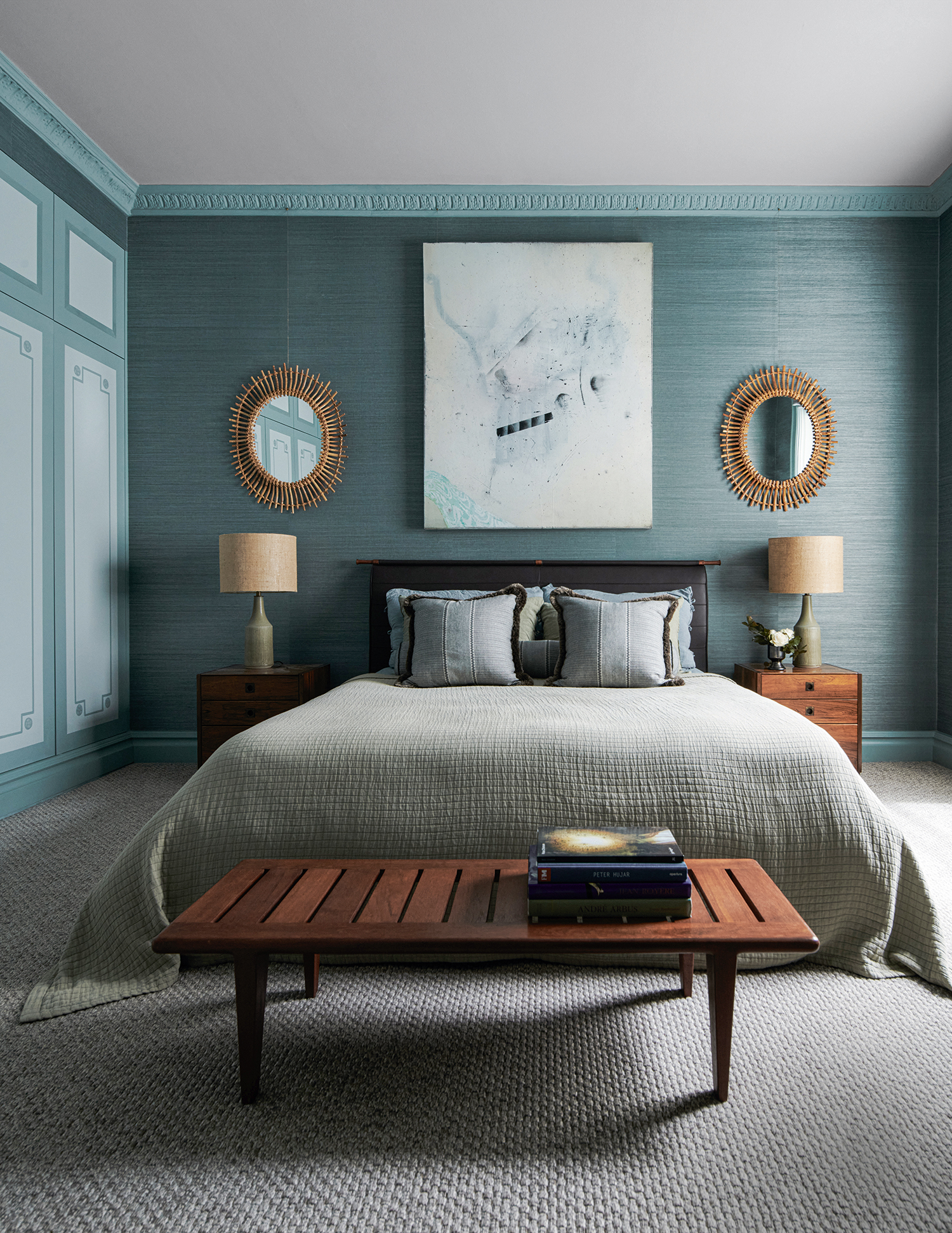
Blue bedrooms are a popular choice, and highly recommended for its healthy qualities. ‘Soft shades of blue such as sky blues or soft aquas can create a calming atmosphere, and are known to reduce heart rate and blood pressure, which is conducive to sleep.’ says Lisa Artis, deputy CEO of The Sleep Charity.
A combination of blue and white is a refreshing take on a classic style, exuding timeless elegance and setting the tone right. All you need to do is imagine the sound of the waves and you’ll be asleep in no time.
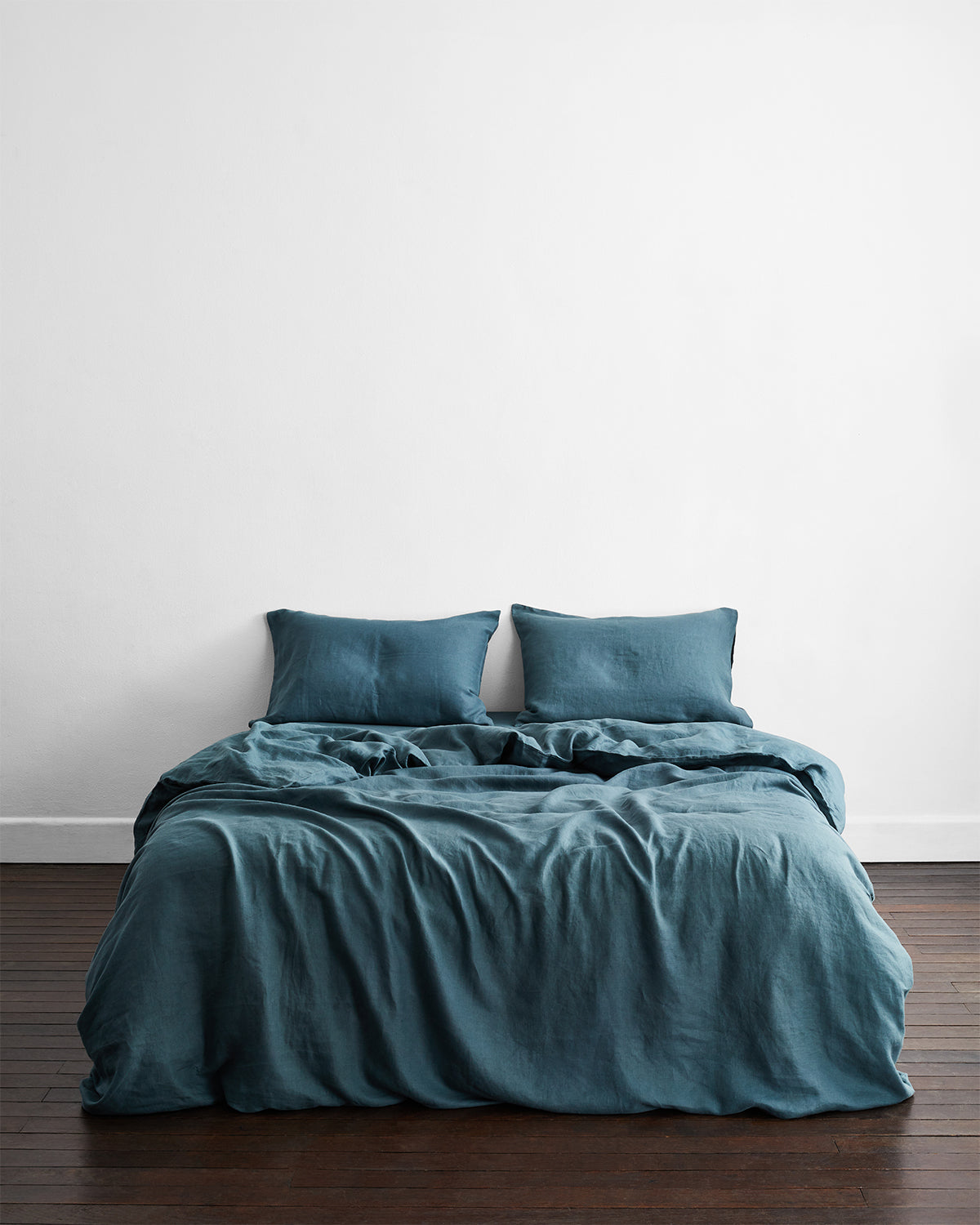
Price: $361.25
Material: Linen
For a different take on a classic blue scheme, look towards petrol tones — and then color drench your room with these beautiful linen sheets from Bed Threads.
2. Yellow
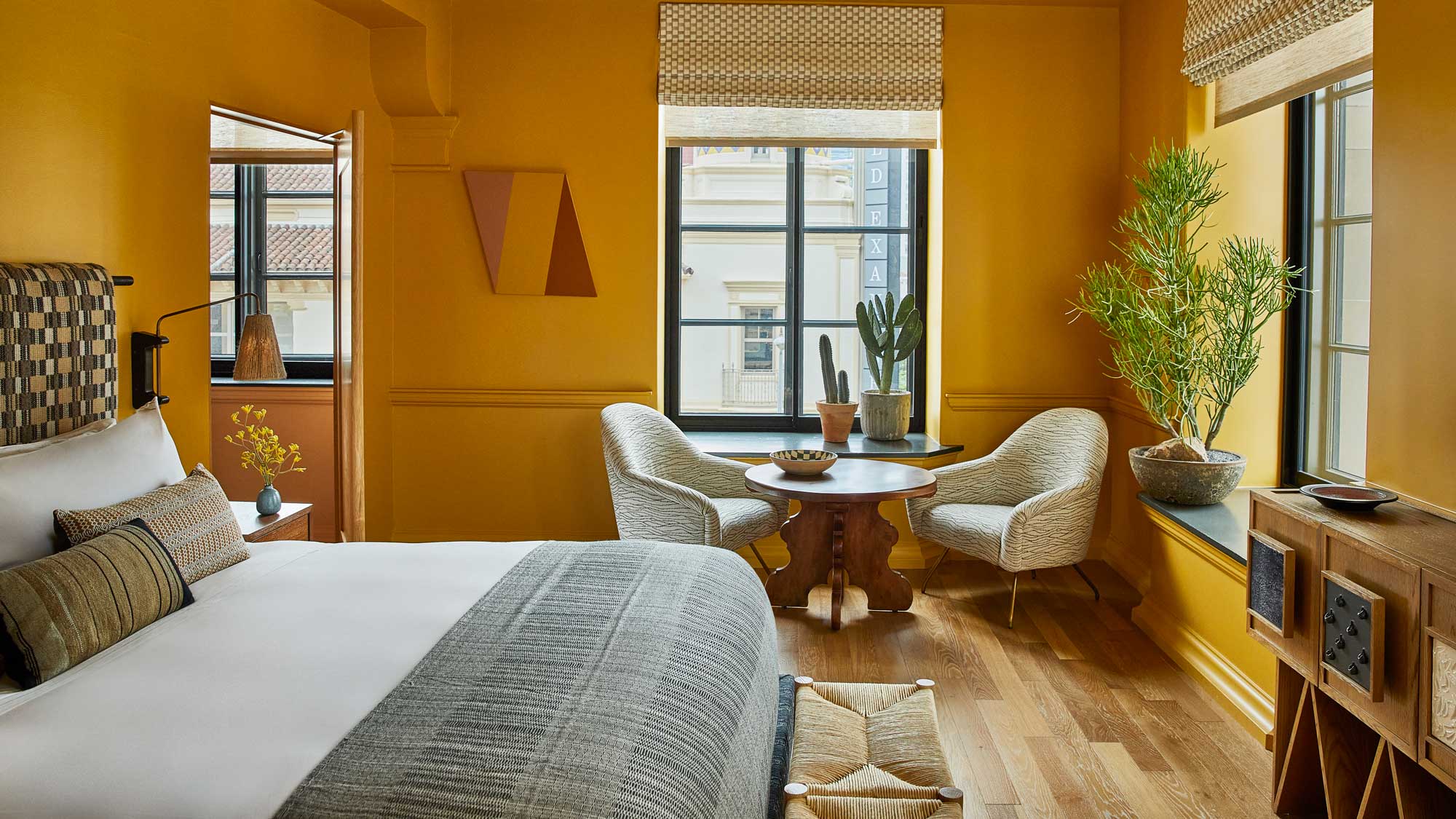
For a positive mood, bright colors are lovely and uplifting and yellow is the perfect example. It’s synonymous with happiness and evokes a feeling of warmth through its connection to the sun.
‘For the ultimate endorphin boost, embrace all yellow walls with crisp white woodwork, complete with a fresh bunch of flowers as a final touch,’ suggests Helen Shaw, a color expert at paint brand Benjamin Moore.
However, be warned, as an energetic color, it's a good idea to tone down yellow for more relaxing sleep spaces. Tones like ochre and mustard are a good alternative to primary and pastel hues, or use more muted colors that go with yellow to help bring the energy levels down.
3. Green
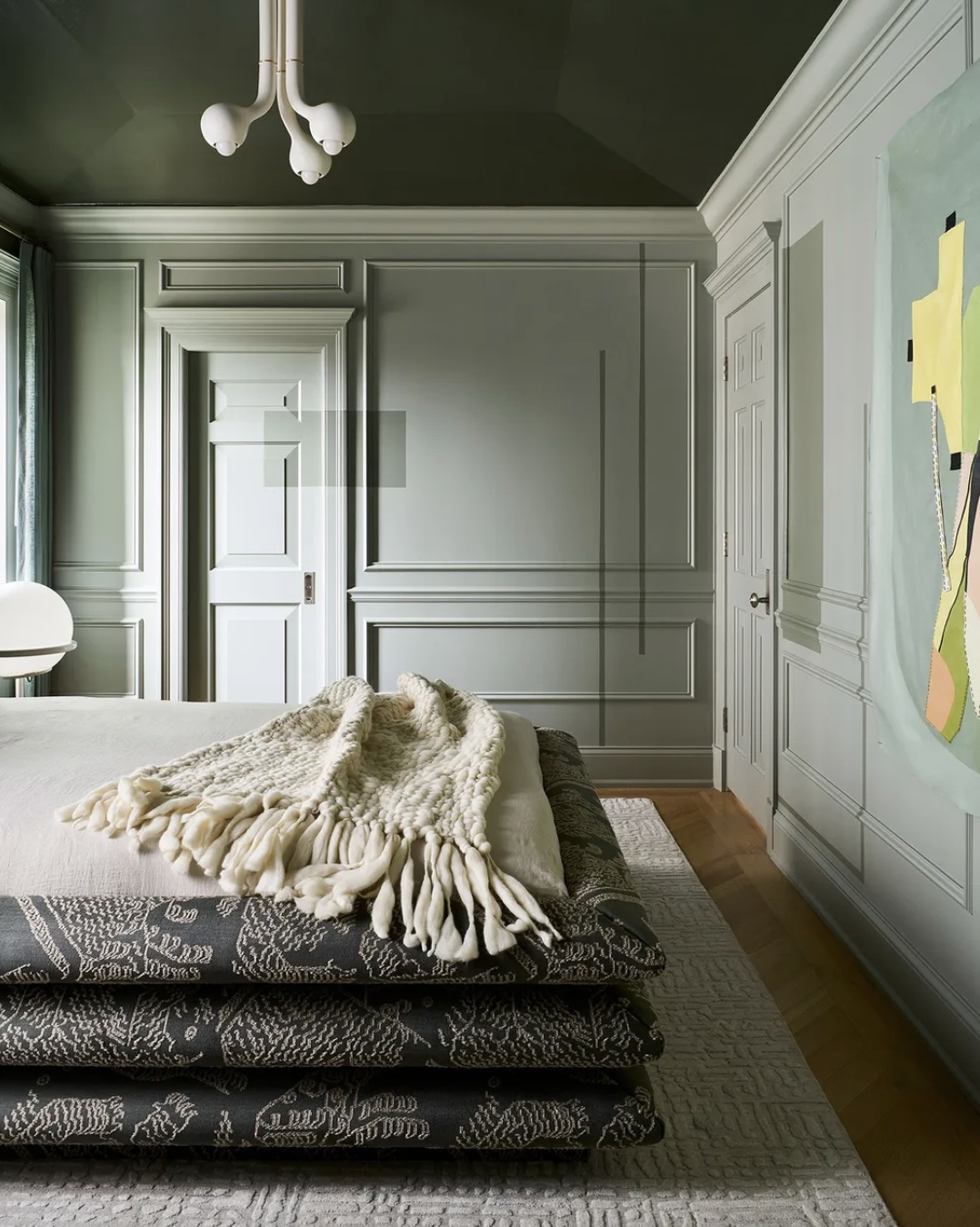
There is no better idea than a green bedroom to cool the mind and soothe the soul, as introducing elements of nature to the interior is always a winner.
‘Opt for layers of tonal natural colors that evoke the soothing power of nature. To style pair mid or deep greens with wood and rattan surfaces for a restful atmosphere,’ Ruth Mottershead, Creative Director at Little Greene, suggests. A natural palette starting with green with the addition of earthy hues and textures will inevitably create a cocooning atmosphere.
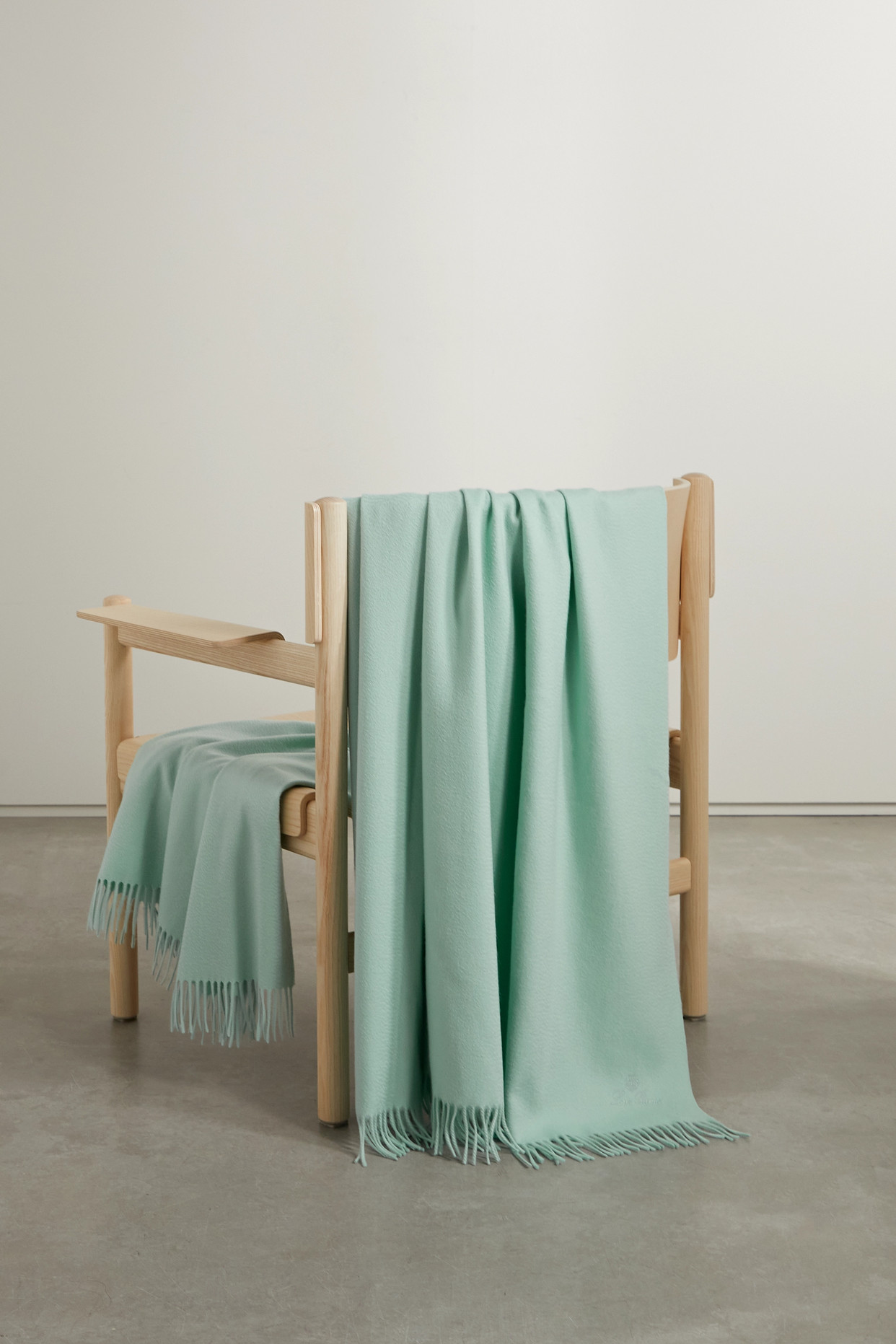
Price: $1,960
Material: Cashmere
If you're looking for green shade inspiration, this throw from Net-a-Porter is the perfect light green that's equal parts calm and energetic.
4. Neutral tones
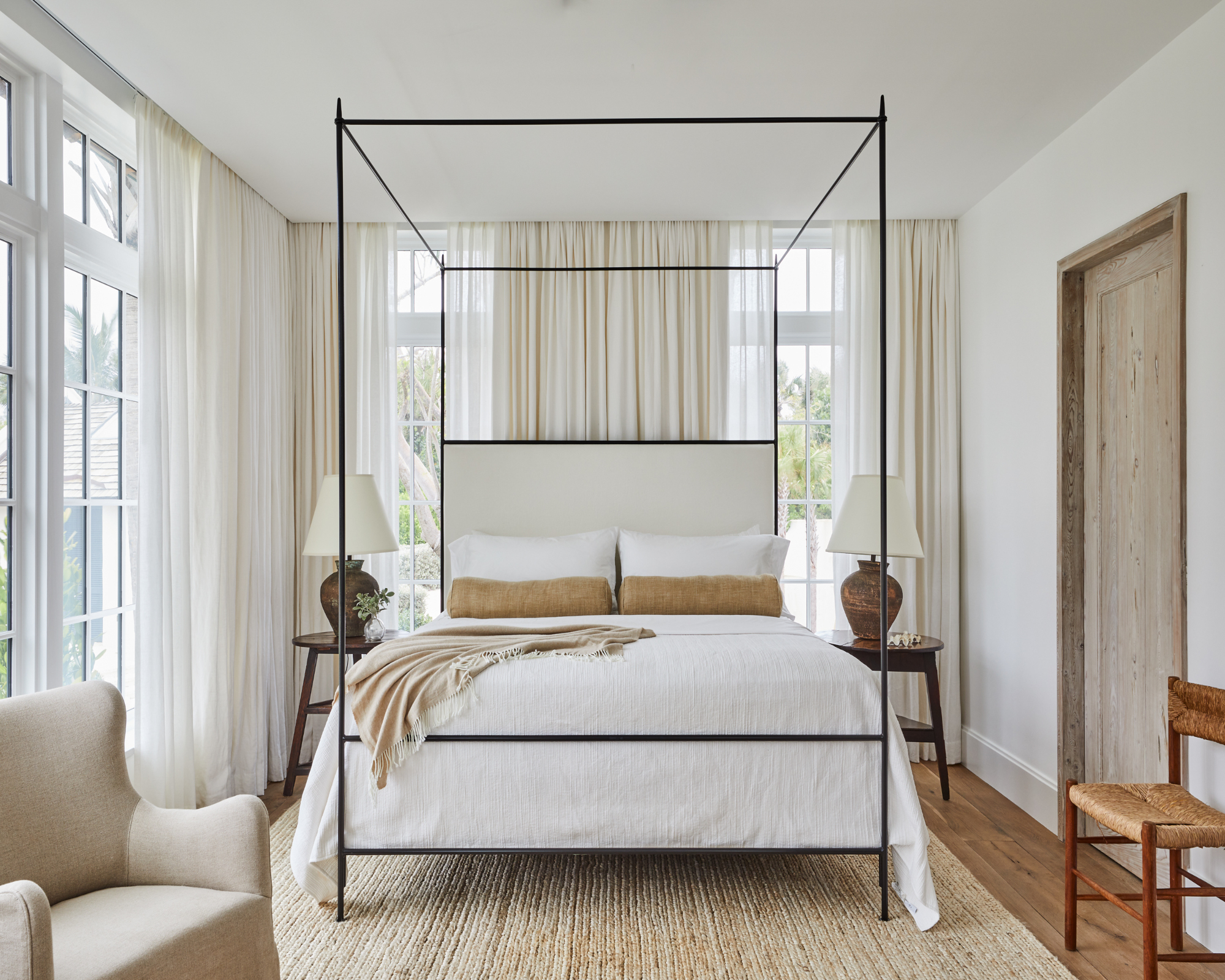
Warm neutral bedroom colors like soft beige, ivory, or light gray are timeless and soothing in a sleeping environment as well as extremely versatile, pairing well with most other colors and so easy to change up and refresh styling.
'Some people find color, in any amount, quite overstimulating in their homes,' Hugh Metcalf, editor of Livingetc, tells me. 'I'm a person who likes to keep things simple when it comes to bedroom colors and embrace neutrals — there are plenty of other spaces in the house you can do something more exciting with color in.' If opting for neutrals, consider color drenching for a more satisfying complete effect.
5. Darker hues
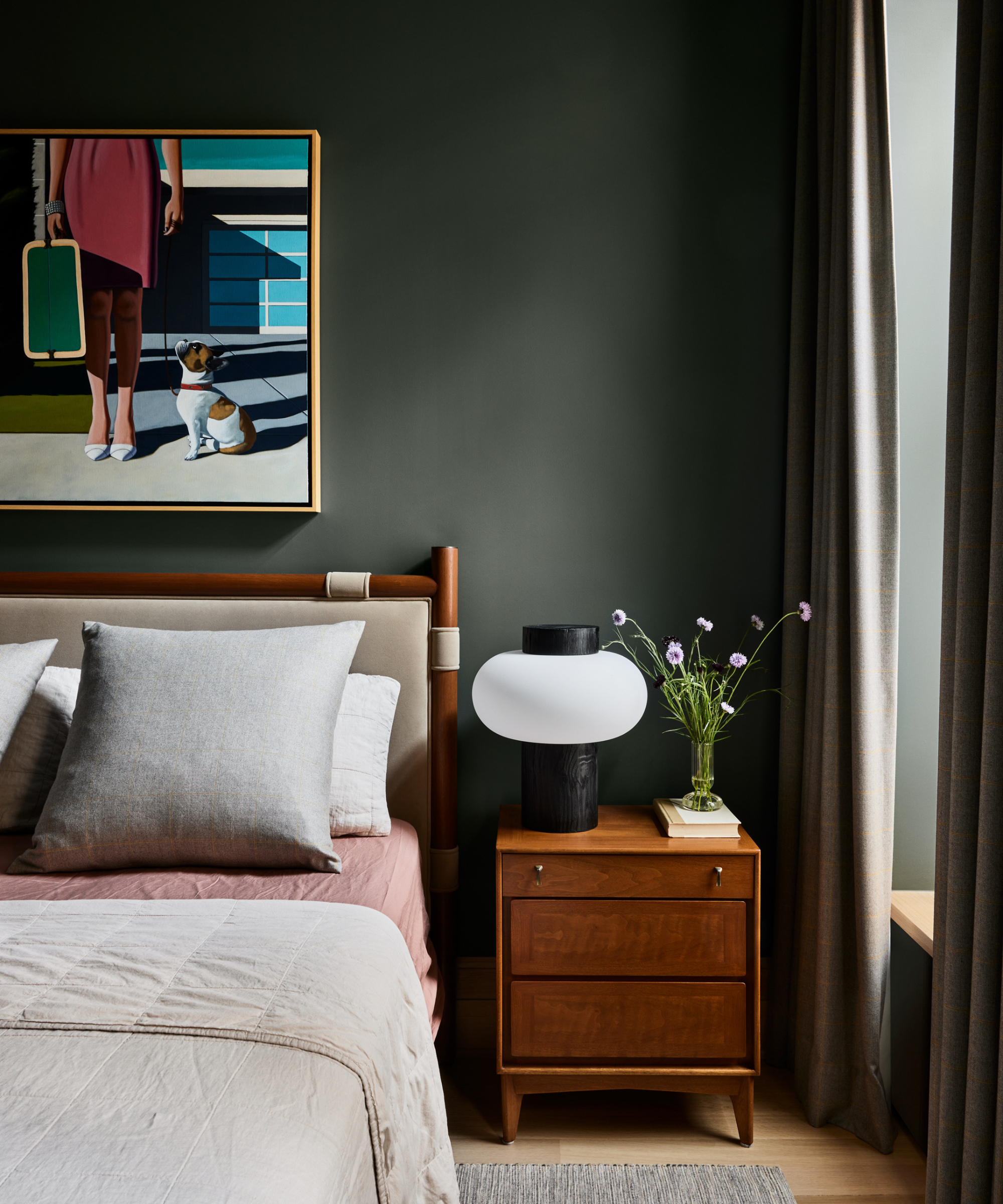
‘Bedrooms also naturally lend themselves to deep, jewel tones as they work to create a cozy space full of character,' says Benjamin Moore's Helen Shaw. A dark bedroom looks even more beautiful when dimly lit with lamps and candles at night.
Consider blues and greens as a good starting point and consider investing in ambient lighting that you can switch on when it’s time for downtime and relaxation, this will help to align your day-night schedule.
Are there colors I should avoid in a bedroom?
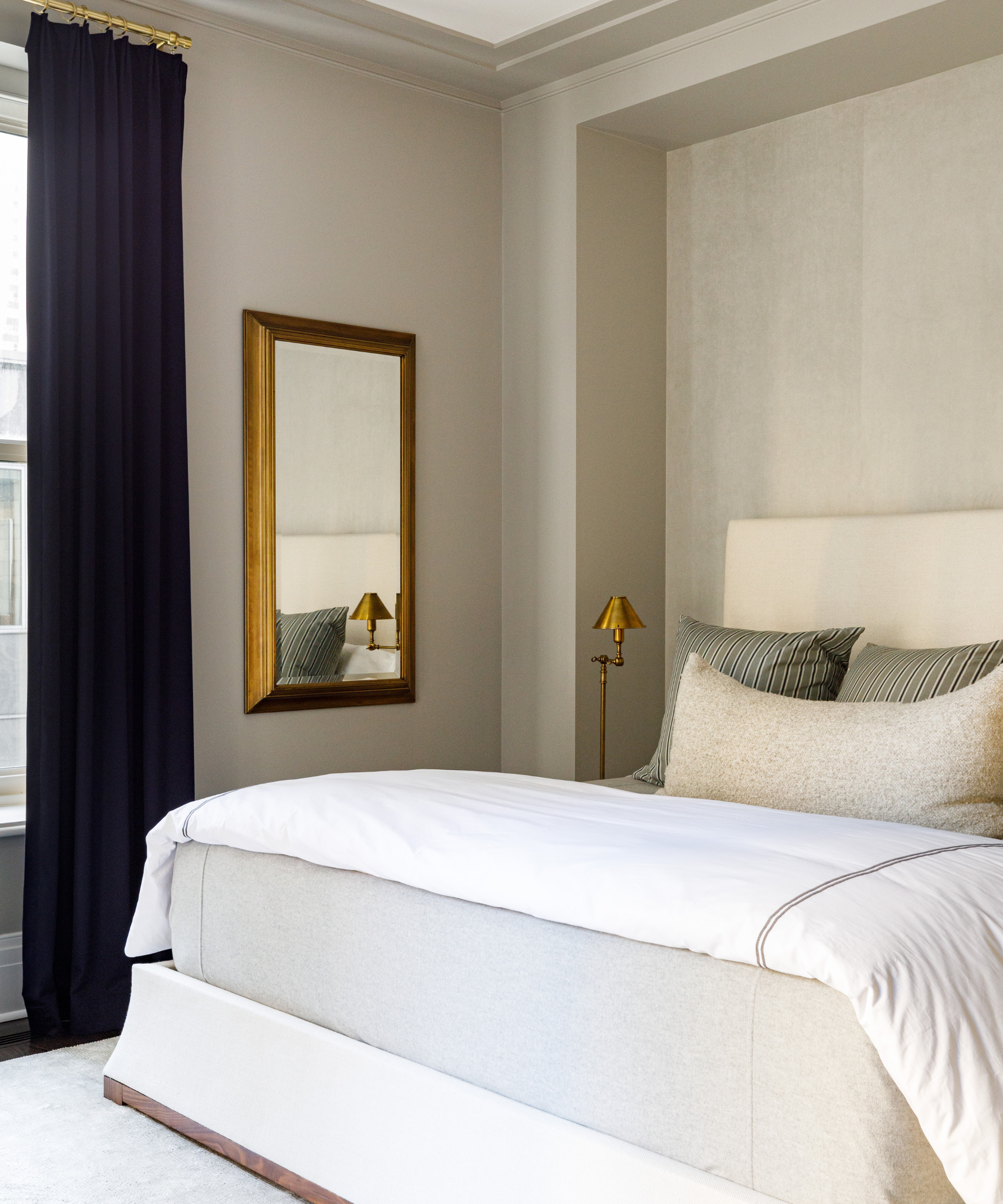
It’s wise to also think about what you need to avoid including in a bedroom to be able to recharge and wake up feeling rejuvenated. ‘Avoid busy or chaotic patterns on walls or bedding, as they an be visually stimulating and disrupt the calming atmosphere needed for sleep,' Lisa Artemis from the Sleep Charity suggests. The same goes for bright, vibrant colors like bright reds, oranges, or neon hues; these colors boost the level of alertness, interrupting the cycle of sleep by keeping the mind excessively active. When it comes to dark colors, some can be soothing but deep shades of browns or blacks can make a room feel too enclosed and somber, which might not set a tone conducive to sleep.
Choosing the right colors for your bedroom can significantly impact your sleep quality and overall well-being, so make sure you feel calm and comfortable with the palette you’re choosing. Stick to what makes you feel good rather than what’s ‘trending’ as you’ll be the one sleeping there, after all.
Be The First To Know
The Livingetc newsletters are your inside source for what’s shaping interiors now - and what’s next. Discover trend forecasts, smart style ideas, and curated shopping inspiration that brings design to life. Subscribe today and stay ahead of the curve.

Portia Carroll is an interior stylist, writer, and design consultant. With a background in interior architecture and design, she has a plethora of creative experience in the industry working with high end interior brands to capture beautiful spaces and products and enhance their qualities.
-
 5 Bathroom Layouts That Look Dated in 2025 — Plus the Alternatives Designers Use Instead for a More Contemporary Space
5 Bathroom Layouts That Look Dated in 2025 — Plus the Alternatives Designers Use Instead for a More Contemporary SpaceFor a bathroom that feels in line with the times, avoid these layouts and be more intentional with the placement and positioning of your features and fixtures
By Lilith Hudson Published
-
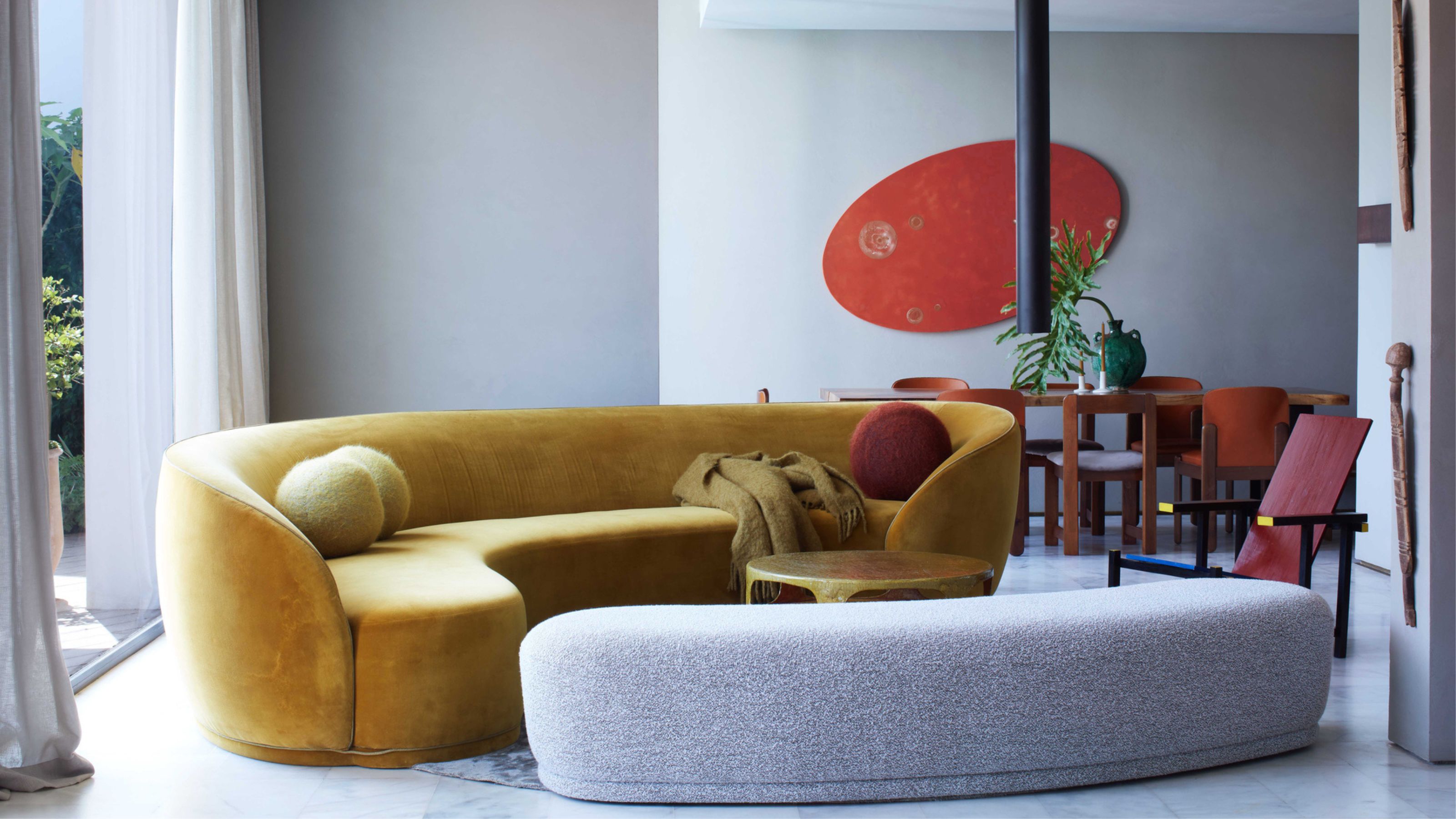 Why Decorating With Mustard Yellow Helps Fill Your Interiors With a Sense of "Confident Calm"
Why Decorating With Mustard Yellow Helps Fill Your Interiors With a Sense of "Confident Calm"There is so much more to decorating with this turmeric-tinted sauce-wiggled-on-a-hotdog not-quite-yellow shade than meets the eye
By Amy Moorea Wong Published